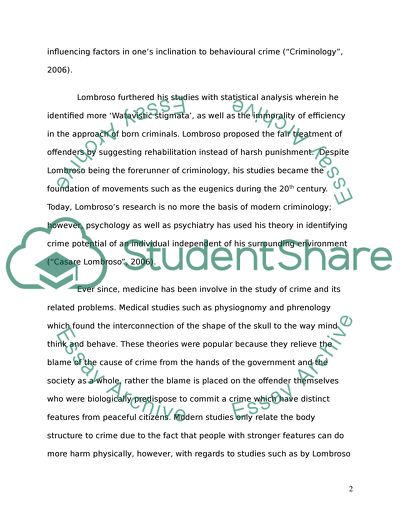Cite this document
(“Role of Biology in Contemporary Criminological Thinking Essay”, n.d.)
Retrieved from https://studentshare.org/science/1510282-role-of-biology-in-contemporary-criminological-thinking
Retrieved from https://studentshare.org/science/1510282-role-of-biology-in-contemporary-criminological-thinking
(Role of Biology in Contemporary Criminological Thinking Essay)
https://studentshare.org/science/1510282-role-of-biology-in-contemporary-criminological-thinking.
https://studentshare.org/science/1510282-role-of-biology-in-contemporary-criminological-thinking.
“Role of Biology in Contemporary Criminological Thinking Essay”, n.d. https://studentshare.org/science/1510282-role-of-biology-in-contemporary-criminological-thinking.


